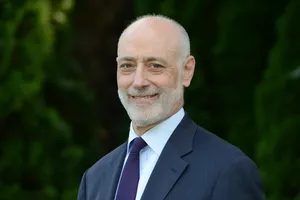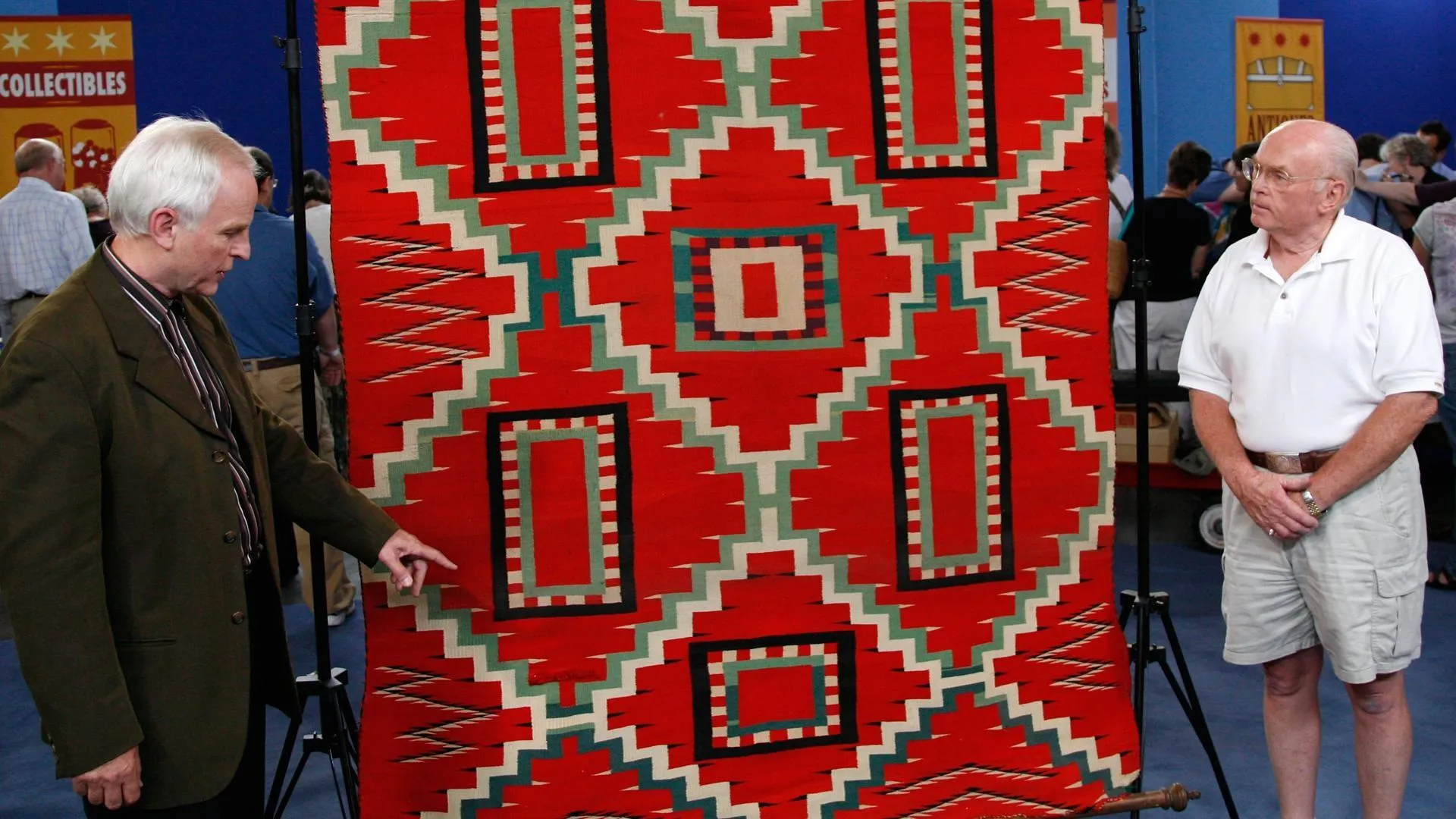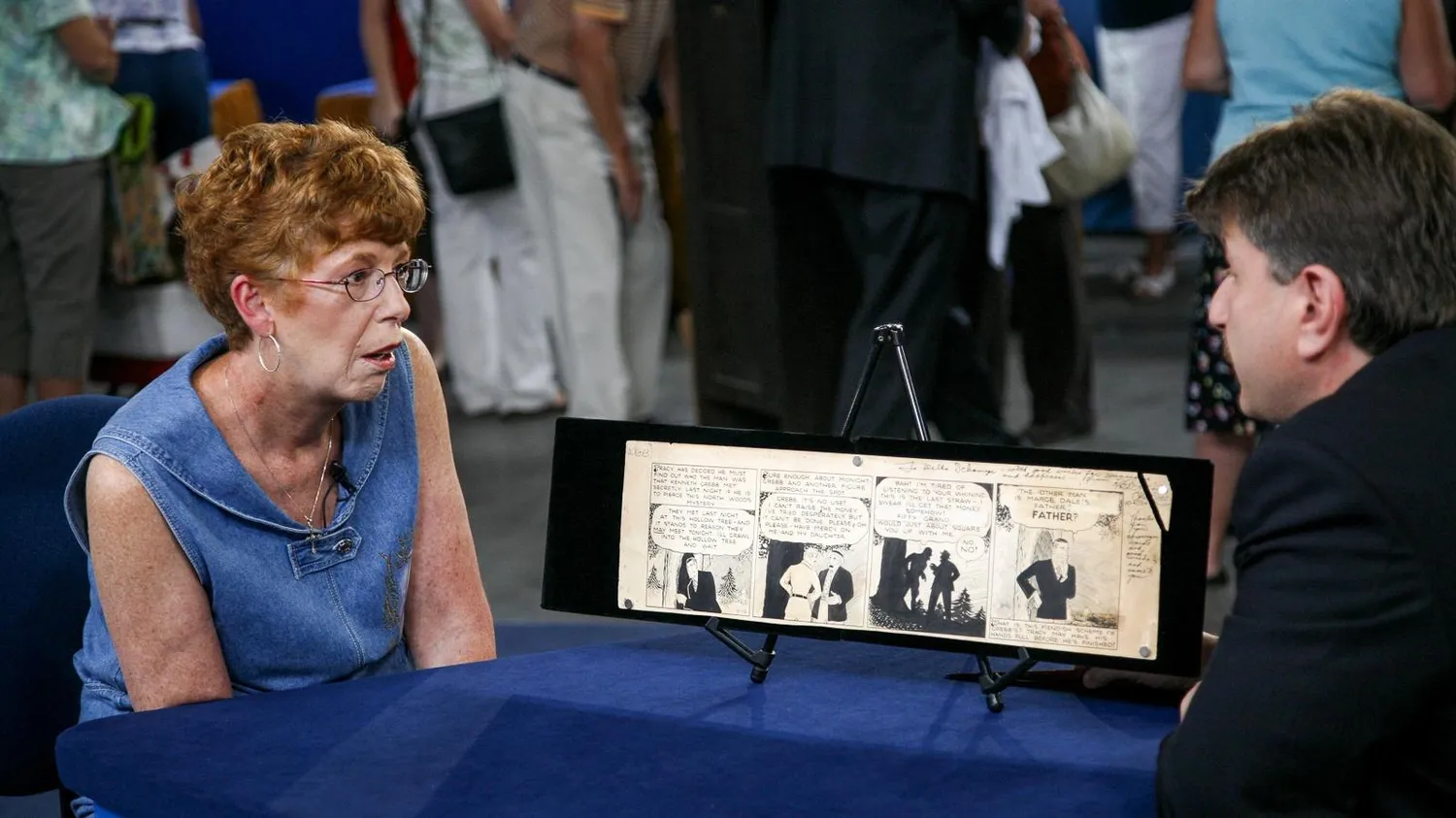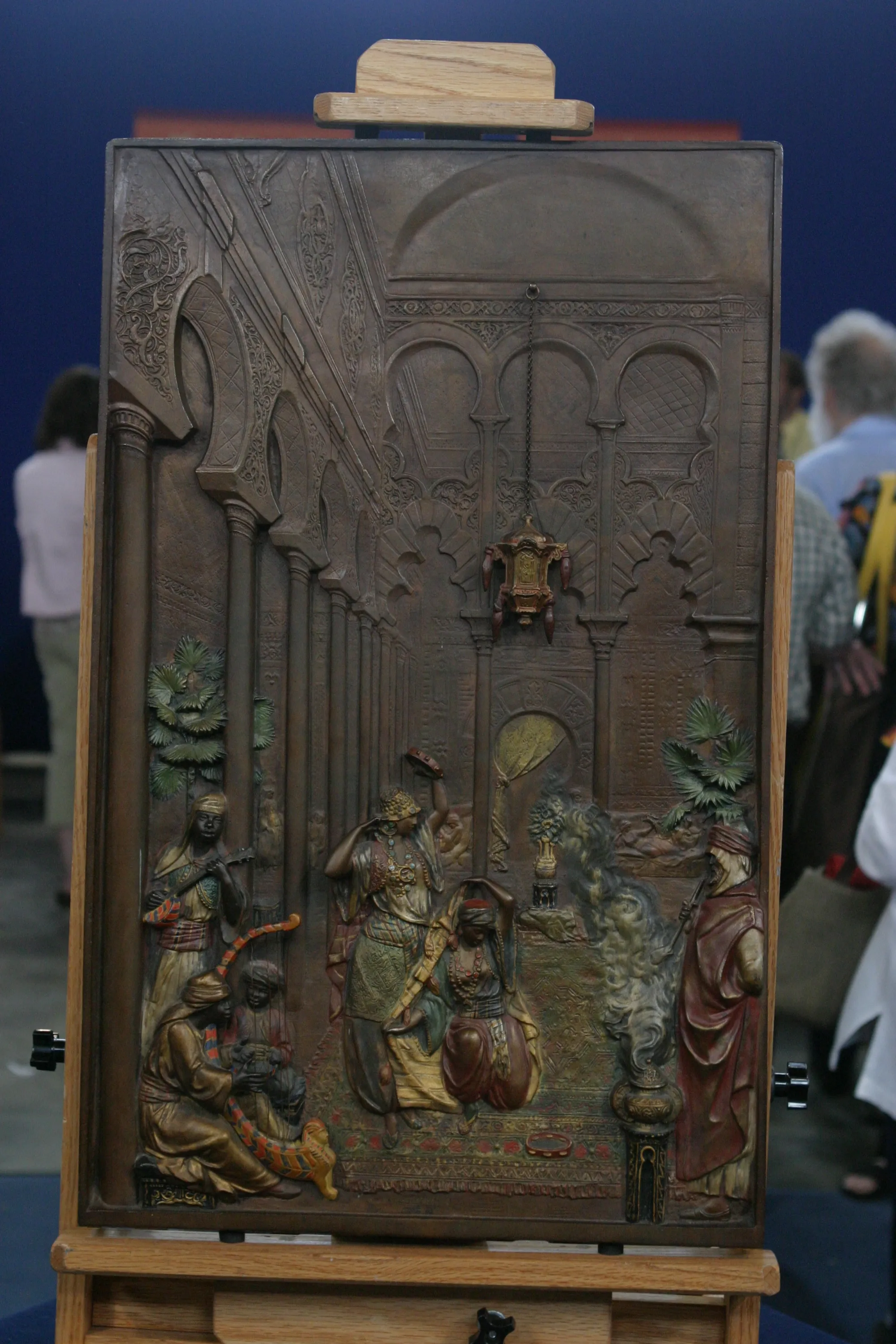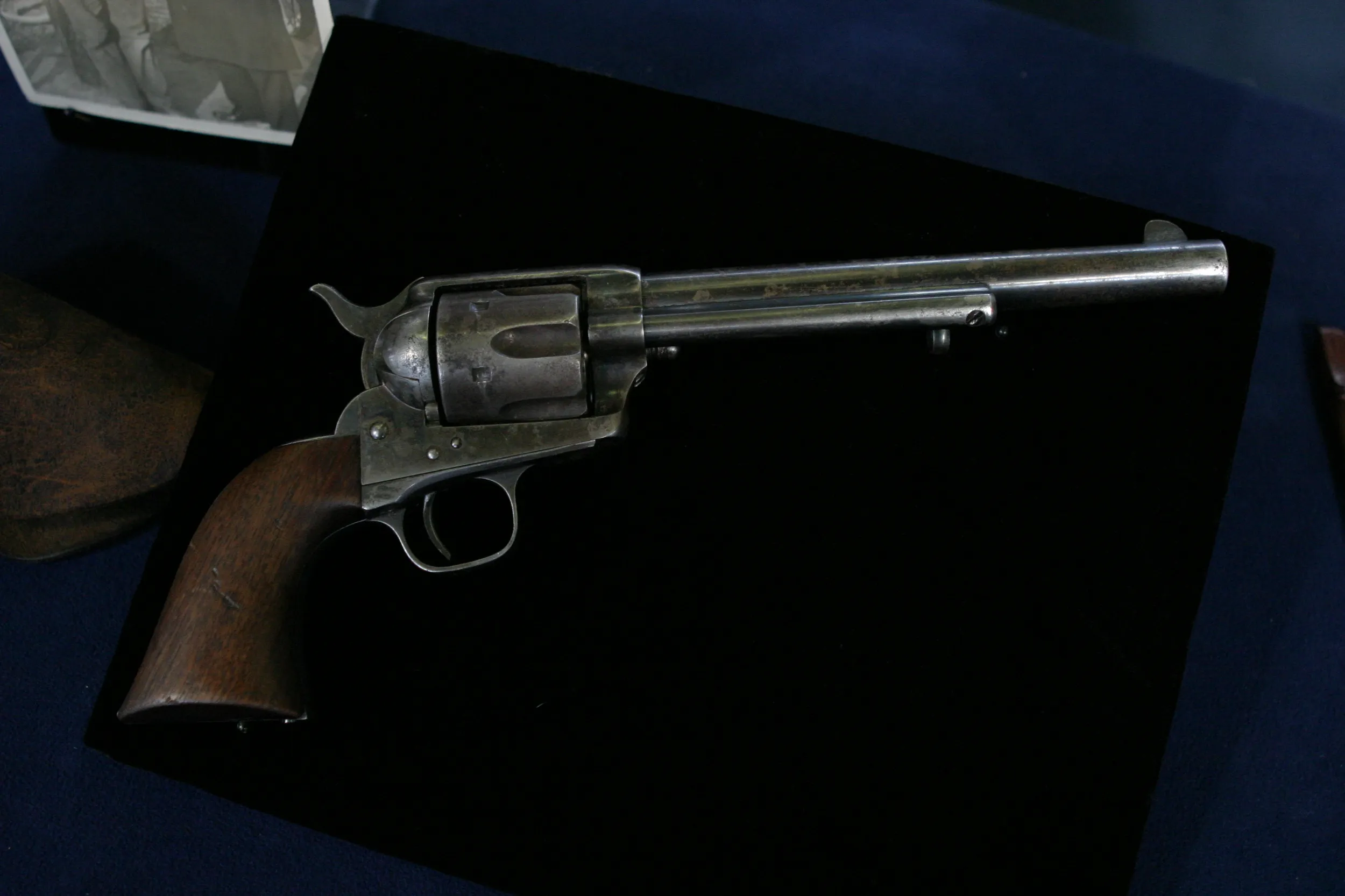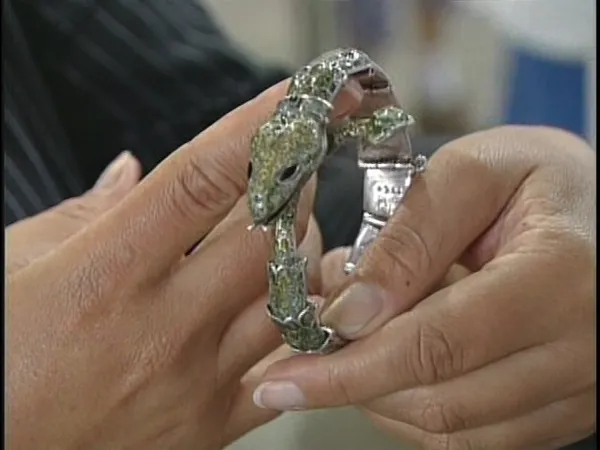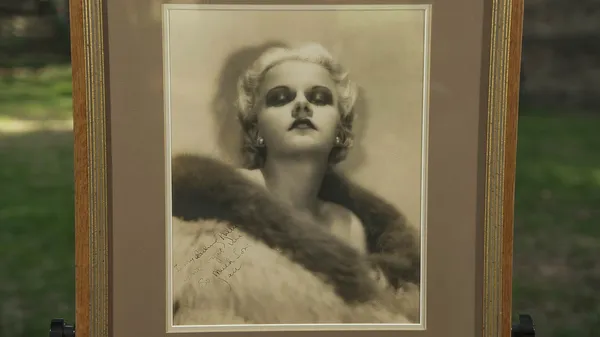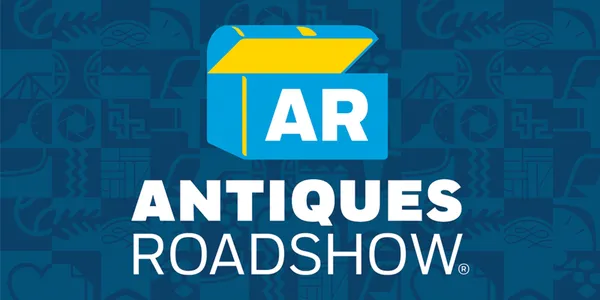GUEST: In the early '70s, my aunt actually gave me those for Christmas as a gift, and explained to me that they originally had been cufflinks that my grandfather was given by the tsar in Russia. My family is Latvian, we came here in the 1950s, early '50s, and my grandfather actually worked in Russia for a while in the early 1900s. And evidently, the tsar gave gifts to the people who did work for him.
APPRAISER: It was common, but an honor, to be given a gift by the tsar of Russia. The tradition of gift-giving was a significant and important one in Imperial Russia, and still remains so today. And any number of people who did some significant service for the imperial government might have received a gift.
GUEST: Okay.
APPRAISER: And the double-headed Russian imperial eagle was the symbol of the government. But presumably he didn't give earrings to your grandfather.
GUEST: The story is, my aunt changed it into earrings.
APPRAISER: And did she wear them?
GUEST: No, she gave them to me, and I wore them.
APPRAISER: That's a very common thing-- pieces get converted. In this particular case, there is evidence, in fact, of the conversion. If you turn them over, you'll see where the backs would have been attached.
GUEST: Okay.
APPRAISER: There are some incised numbers on the back that are very difficult to see, but are typically the inventory numbers of the maker. Oftentimes, these numbers are obscured by dirt over the years.
GUEST: Oh, okay.
APPRAISER: So they're, they can be very difficult to see, even under magnification. As a gift from Tsar Nicholas II, these could have been made any time during his reign from 1894 to the downfall in 1917.
GUEST: Okay.
APPRAISER: Most likely they were made around 1905, 1910. But the original backs are gone, which may have had additional markings on it that would have given us the real info.
GUEST: Yeah.
APPRAISER: Even as earrings today, in the very form that they are now, I would say, uh, in a retail setting that they would be worth $5,000 to $7,000.
GUEST: Wow, how wonderful.
APPRAISER: If they, if they were converted back to cufflinks, it wouldn't be original condition, of course, as cufflinks.
GUEST: Right.
APPRAISER: But they would be closer to their original condition. They would probably be worth $12,000 to $15,000.
GUEST: Oh, my God.
APPRAISER: I think that there's evidence on the back by the little numbers that they, in fact, were probably by the jeweler Carl Fabergé the imperial jeweler of Russia. Uh...
GUEST: Oh, my gosh.
APPRAISER: And, in fact, uh Tsar Nicholas II kept a little book of his own collection of cufflinks. And we could compare it to that to see if anything like that appears.
GUEST: Okay.
APPRAISER: But one would have to study them a little more carefully. As Fabergé cufflinks, even converted, in a retail setting, they would probably be sold for $40,000 to $50,000.
GUEST: (laughing): Oh, my God. Unbelievable. (laughing): I'll probably take better care of them now.
GUEST AND APPRAISER: (both laughing)
